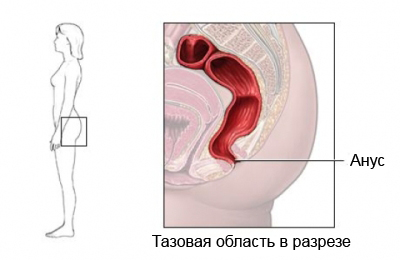Removal of warts – Removal of anal warts
Description removal of warts
Anal warts are located in and around the anus. Caused by their appearance 6 and 11 types of human papillomavirus (HPV). Removal of warts – operation, designed to remove or destroy anal warts.

The reasons for the removal of warts surgery
The operation is performed, to remove or destroy anal warts, If other treatments, as well as the use of drugs did not bring a positive effect or not recommended.
Surgery may be the best solution, if the patient has a lot of warts, or warts vyrasli to large sizes. If the warts are not removed, they can grow bigger and multiply. Warts can cause cancer in the affected area.
Possible complications of removing warts
Complications are rare, However, if you plan to have surgery to remove warts, You need to know, they may include:
- Bleeding;
- Infection;
- Burns.
How is the removal of warts?
Preparation for the procedure
A few days before the operation, it is desirable to start the bowel clean.
The day before the operation must be:
- Serving breakfast and lunch, a light meal;
- After dinner, drink only clear liquids, such as water, broth, juices without pulp, fruit icecream;
- Do not eat or drink anything after midnight the day of surgery;
- It is necessary to take medication prescribed by a physician.
It is necessary to take into account, that recovery from surgery will take about a week, therefore it is necessary to postpone the deadline for the case.
Anesthesia
Depending on the condition of the patient, number and size of warts, may apply one of the following types of anesthesia:
- The operation is performed under general anesthesia, during the operation the patient is asleep;
- Spinalynaya anesthesia – analgesia lower body;
- Local anesthesia – analgesia particular area or portion of the body.
Procedure removal of anal warts
There are various types of surgical procedures for removal or destruction anal borodavok.Tip operation depends on various factors, such as the number and size of warts. The list of possible treatments include:
- Cryotherapy – warts are destroyed by freezing with liquid nitrogen;
- Amputation – the wart is cut or shaved off the special tool;
- Laser or electrosurgery – to destroy the warts using a laser or electric tool.
Duration of operation
The duration depends on the type of procedure, to be used. Operation in most cases takes several minutes.
Will it hurt?
Anesthesia will prevent pain during surgery. After the procedure may cause some pain in and around the anus. For pain relief after surgery appoint appropriate painkillers.
The time spent in hospital
This procedure is usually done on an outpatient basis, so that after the operation would not need to stay in the hospital. You can go home the day of surgery.
Postoperative care
In the hospital
After surgery, commonly used painkillers to relieve pain.
Home Care
Houses need to fulfill the following recommendations, to ensure the normal postoperative recovery:
- If there is no discomfort, We need to move from time to time;
- You can not do the heavy work;
- It is not recommended to stand or sit for more than one hour;
- It is recommended to wear comfortable, free clothes;
- You need to eat foods that are high in fiber and drink plenty of fluids. This will prevent constipation.
Rectal Care:
- We need to take a sitz bath 3-4 twice a day and after each bowel movement. Sitz baths will help relieve discomfort and clean the anal area. For a sit-bath to sit in warm water for 10-15 minutes. After the bath do not need to wipe or rub the anus;
- After operation, within a few days, after a bowel movement is necessary to use wet wipes, instead of toilet paper;
- Within a week or more from the rectum will go a reddish-yellow discharge. During this period it is necessary to use sanitary pads, to absorb secretions. After physical activity or bowel movements can activate selections.
It is necessary to go to the hospital in the following cases:
- Heavy bleeding from the rectum;
- Pain, not extending the application of painkillers;
- Symptoms of infection, such as fever and chills;
- Foul-smelling discharge from the rectum;
- Excessive swelling in the rectal area;
- Otsutstvaie regular bowel movements.
